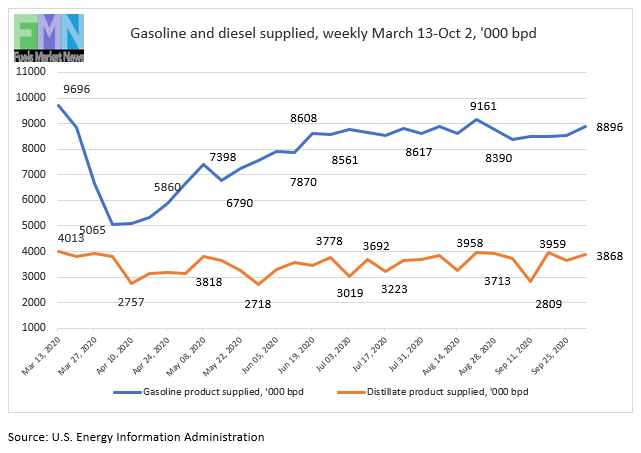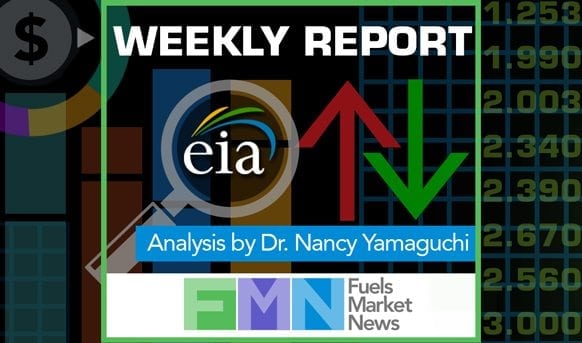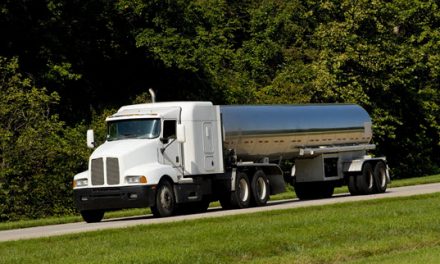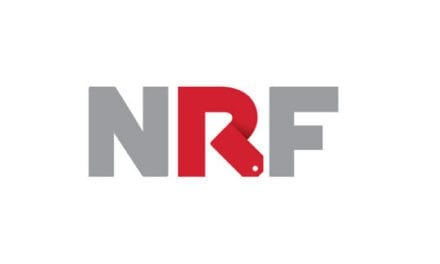Analysis by Dr. Nancy Yamaguchi
Overview and COVID-19 Apparent Demand Response
The U.S. Energy Information Administration (EIA) released its weekly data on diesel and gasoline retail prices for the week ended October 12. Prices were released a day late because of the federal holiday on Monday. Prices changed by only a fraction of a cent, reversing the prior week’s small price movement. Gasoline prices eased by 0.05 cents per gallon, while diesel prices rose by 0.8 cents per gallon. This broke a five-week downward trend in retail diesel prices. Retail prices for gasoline averaged $2.167/gallon. Diesel prices averaged $2.395/gallon. The COVID-19 pandemic caused severe demand destruction. Demand has been recovering gradually, but it has not regained pre-pandemic levels. COVID-19 infections continue to rise, and some closures of economic activities have been reinstituted.
The EIA publishes weekly “product supplied” data as its proxy for demand. These data show gasoline demand crashing from 9,696 barrels per day (kbpd) during the week ended March 13 to just 5,065 kbpd during the week ended April 3, a huge hit of 4,631 kbpd in just four weeks. That was the low point. Demand thereafter trended generally up until it reached 8,608 kbpd during the week ended June 19. Since then, demand has cycled up and down, but it has never regained its March 13 level. Apparent demand recovered to 8,809 kbpd during the week ended July 24, retreated to 8,617 kbpd during the week ended July 31, then jumped to 9,161 kbpd during the week ended August 21. Since then, demand has been in the range of 8,400-8,900 kbpd, and it averaged 8,896 kbpd during the most recent week ended October 2. The EIA points out that “product supplied” is not a precise measure of demand, but these data provide the most up-to-date numbers publicly available.
Diesel demand dropped sharply in response to COVID-19. It began to recover in fits and starts. Diesel demand stagnated at first, recovered moderately, then began to vacillate between approximately 3,000 kbpd and 3,800 kbpd. The EIA reported that distillate fuel oil demand plunged by 1,256 kbpd between the week ended March 13 and the week ended April 10, slumping from 4,013 kbpd to 2,757 kbpd in a four-week period. Demand has been cycling up and down, rising strongly to 3,958 kbpd during the week ended August 21, then retreating during the late-August and early September to bottom out at 2,809 kbpd during the week ended September 11. This was the lowest reported level since the week ended April 10, reinforcing the concern that demand will not fully recover to pre-COVID-19 levels this calendar year. Storms and wildfires are also influencing fuel use. The most recent week ended October 2 showed diesel product supplied averaging 3,868 kbpd. Since mid-June, gasoline and diesel demand have stagnated at approximately 90% of pre-pandemic levels.

Gasoline and diesel supplied weekly, March 12-Oct. 2
For the week ended October 12, retail prices for gasoline declined by 0.5 cents/gallon. Retail prices for diesel rose by 0.8 cents/gallon.
The national average price for gasoline was $2.167/gallon. This price was 46.2 cents/gallon below the price for the same week one year ago. In February, retail prices for gasoline were higher than they had been a year earlier. The COVID-19 pandemic caused gasoline prices to fall below $2/gallon. Prices in four of the five PADDs have regained the $2/gallon level. From late-November through early March, gasoline prices had been above their levels from last year. During the week ended March 2, retail gasoline prices were a mere 0.001 cent/gallon above last year’s level. The huge price declines since then have brought gasoline prices dramatically below their levels of last year.
Diesel prices also had been above last year’s level, but prices are now well below these levels. On a national basis, the retail price for diesel averaged $2.395/gallon—65.6 cents/gallon lower than the price in the same week last year.
Futures Prices and Retail Price Outlook
During the week October 5 to October 9, West Texas Intermediate (WTI) crude oil futures prices rose strongly by $4.31 per barrel (11.6%) to close the week at $40.60 a barrel, a significant recovery from the prior Friday’s closing price of $37.05 a barrel. Prices fluctuated dramatically on stock market movements, Hurricane Delta, an oil worker’s strike in Norway, President Trump’s hospitalization for COVID-19 infection, and a flurry of conflicting announcements concerning a federal economic stimulus package. As of Wednesday October 14, WTI crude futures prices are maintaining the $40-a-barrel level.
During the week of October 5 to October 9, gasoline futures prices surged by 10.64 cents per gallon (9.4%.) Diesel futures prices jumped by 10.5 cents per gallon (9.7%.) While the relationship between futures prices and retail prices is not immediate or one-for-one, retail prices are likely to rise this week.
Retail Diesel Prices
The week ended October 12 brought a 0.8 cents per gallon increase in the retail price for diesel to reach an average price of $2.395/gallon. Prices rose in PADDs 2, 3, 4 and 5, while remaining unchanged in PADD 1. The national average price for the week was 65.6 cents/gallon below where it was during the same week last year.
For the year to date, diesel prices have fallen by a cumulative 68.4 cents/gallon, a major downward slump. The downward trend flattened in June and July, but prices have been declining recently. In the autumn of 2019, retail diesel prices had been below the $3/gallon mark until the attacks on Saudi Arabian oil facilities in mid-September 2019. They rose at that time, and they remained above the $3/gallon mark until the week ended February 3, 2020. Prices then continued to slide.
In the East Coast PADD 1, diesel prices remained unchanged at an average $2.473/gallon. Within PADD 1, New England prices rose by 0.1 cent to average $2.578/gallon. Central Atlantic diesel prices fell by 0.6 cents to average $2.649/gallon. Lower Atlantic prices rose by 0.4 cents to average $2.332/gallon. PADD 1 prices were 57.1 cents/gallon below their levels for the same week last year.
In the Midwest PADD 2 market, retail diesel prices rose by 1.6 cents to average $2.275/gallon. Prices were 69.2 cents below their level for the same week last year. PADD 2 joined PADD 3 during the week ended June 17, 2019, in having diesel prices fall below $3/gallon. Prices subsequently fell below $3/gallon in PADD 4 and PADD 1. Finally, PADD 5 prices also slid below the $3/gallon mark.
In the Gulf Coast PADD 3, retail diesel prices rose by 0.7 cents to average $2.148/gallon. PADD 3 continues to have the lowest diesel prices among the PADDs, currently 24.7 cents below the U.S. average. Prices were 65.7 cents below their level for the same week in the previous year.
In the Rocky Mountains PADD 4 market, retail diesel prices rose by 1.1 cents to average $2.330/gallon. PADD 4 prices were 71.1 cents lower than for the same week in the prior year.
In the West Coast PADD 5 market, retail diesel prices rose by 0.5 cents to average $2.933/gallon. PADD 5 prices were 72.0 cents below their level from last year. Until December 2019, PADD 5 had been the only district where diesel prices were higher than they were in the same week last year. Subsequently, prices rose until this was true in all other PADDs. Prices have fallen dramatically, and the national average price is now well below its level of last year. PADD 5 prices excluding California rose 0.4 cents to average $2.538/gallon. This price was 70.2 cents below the retail price for the same week last year. California diesel prices rose by 0.6 cents to average $3.255/gallon. Until the week ended June 24, 2019, California had been the only major market where diesel prices were above $4/gallon, where they had been for nine weeks. California prices retreated below $4/gallon from July through October, rose above $4/gallon again during the first three weeks of November, and declined since then until beginning to pick up in June and July 2020. California diesel prices were 72.4 cents lower than they were at the same week last year.



Retail Gasoline Prices
The COVID-19 pandemic continues to have a huge impact on the U.S. gasoline market. Retail prices for gasoline dropped below $2 a gallon in April, and they remained there throughout April, May, and into early June before finally climbing back to the $2/gallon level during the week ended June 8. Until the pandemic, it had been over four years since the average retail price for gasoline had been below the $2/gallon mark. With the phased re-opening of the economy, demand began to rise, as did prices. Unfortunately, so did coronavirus infections. Some economic activities have been scaled back. Gasoline prices have fluctuated over the past month, moving down by 0.5 cents during the current week. Prices have fallen in four of the last five weeks.
During the current week ended October 12, average retail prices for gasoline declined by 0.5 cents to average $2.167/gallon. Prices rose in PADDs 1 and 3 while falling in PADDs 2, 4 and 5. Retail gasoline prices for the current week were 46.2 cents per gallon lower than they were one year ago. Until November, gasoline prices had been below their levels of last year. Prices then rose to surpass last year’s levels in all PADDs. The downhill price slide changed this, making gasoline a bargain.
Looking back at historic prices, gasoline prices hit a peak of $2.903/gallon during the week ended October 8, 2018. Prices then slid downward for 14 weeks in a row, shedding a total of 66.6 cents per gallon. In the next 17 weeks, prices marched back up by 66 cents/gallon. Prices came very close to the peak they hit in early October 2018. However, the months of May and the June 2019 brought an easing of prices amounting to 23.3 cents per gallon. The week ended July 1 reversed that downward trend and sent prices up once again. The COVID-19 pandemic caused a price collapse, but prices began to climb back up in May, June, and early July. The second half of July brought a modest easing of prices, which levelled off in mid-August and began to reverse course. The first three weeks of September brought another price retreat, which has levelled off over the past few weeks.
For the current week ended October 12, East Coast PADD 1 gasoline retail prices edged up by 0.1 cent to average $2.131/gallon. This week’s average price was 33.1 cents/gallon below where it was during the same week last year. Within PADD 1, New England prices rose by 1.1 cents to average $2.112/gallon. Central Atlantic market prices rose by 1.6 cents to average $2.286/gallon. Prices in the Lower Atlantic market fell by 1.1 cents to average $2.041/gallon.
In the Midwest PADD 2 market, retail gasoline prices fell by 1.7 cents to average $2.032/gallon. PADD 2 prices for the week were 44.6 cents/gallon lower than they were for the same week last year.
In the Gulf Coast PADD 3 market, gasoline prices rose by 1.2 cents to average $1.839/gallon. During the week ended March 16, PADD 3 was the first region where retail prices fell below the $2/gallon level. It was joined subsequently by PADD 2, then by PADD 1, and then by PADD 4. Currently, PADD 3 remains the only PADD where prices are still below $2/gallon. PADD 3 usually has the lowest average prices among the PADDs. PADD 3 prices for the week were 41.8 cents/gallon lower than for the same week last year.
In the Rocky Mountains PADD 4 market, gasoline pump prices fell 1.0 cent to average $2.264/gallon. This week’s PADD 4 prices were 44.2 cents/gallon lower than at the same time last year.
In the West Coast PADD 5 market, retail gasoline prices fell by 0.9 cents to average $2.798/gallon. PADD 5 typically has the highest retail prices for gasoline, and until mid-March it had been the only PADD where retail gasoline prices stayed above $3/gallon. Prices this week were 86.7 cents/gallon lower than last year’s price. Prices excluding California declined by 0.1 cent to average $2.512/gallon. This was 64.1 cents/gallon below last year’s price. California prices fell by 1.2 cents during the current week to average $3.049/gallon. California had been the last state where gasoline prices had remained above the $3/gallon line, but this changed the week ended March 30. On Thursday March 19, California led the U.S. by taking the dramatic step of ordering a statewide shelter-in-place to combat the spread of COVID-19. This order affected approximately 40 million people, and it caused a dramatic contraction in fuel demand. The state began to re-open businesses and facilities in May, but COVID-19 cases rose again, and some counties backtracked reopening. California retail gasoline prices were 104.0 cents per gallon below their levels from the same week last year.











